Whey is the byproduct of making cheese, yogurt, and other cultured dairy products. It’s packed with protein and nutrients and tastes delicious in bread and baked goods. This list of 45+ practical uses for whey will make you think twice before pouring it down the drain!
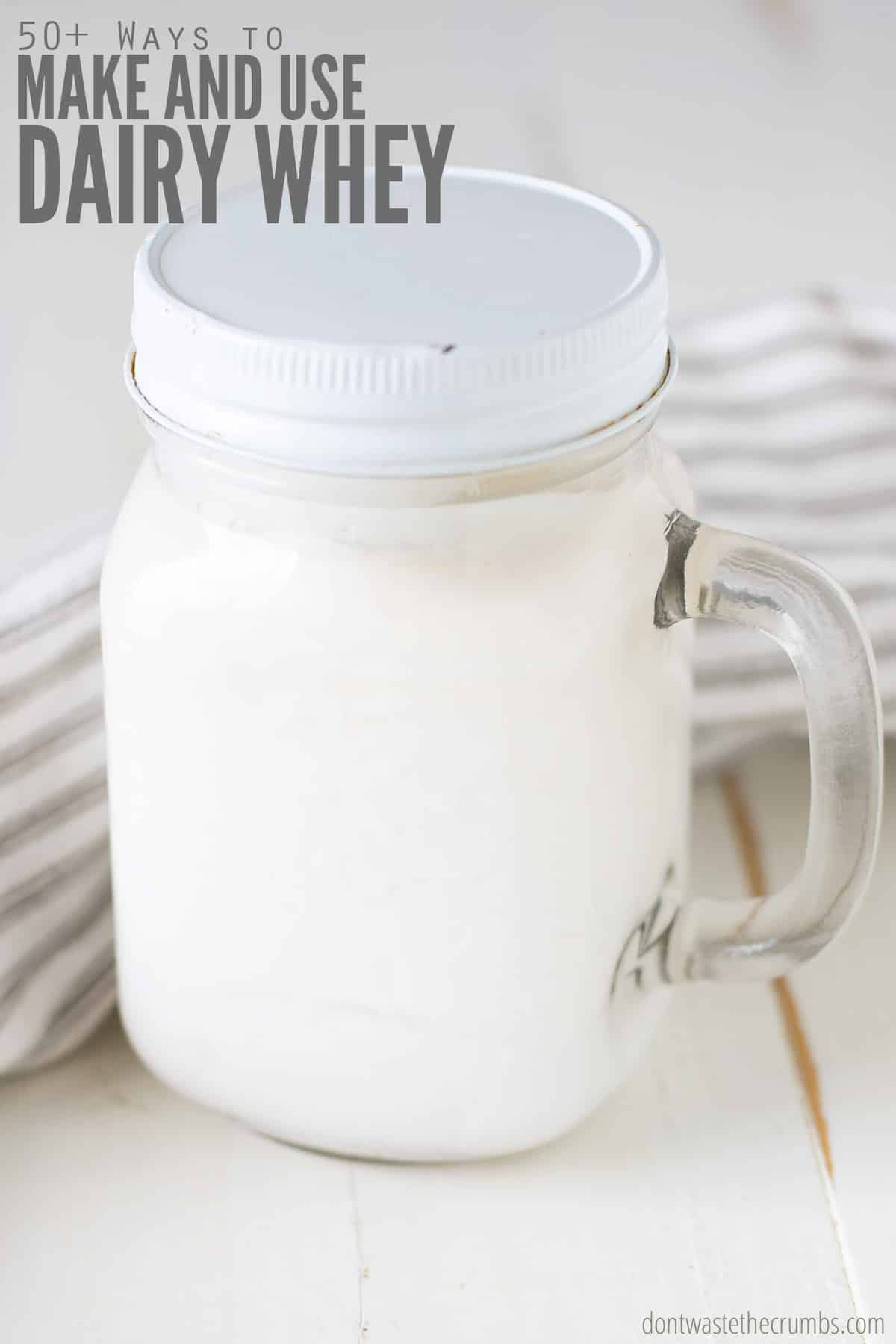
If you’ve ever opened a container of Greek Yogurt, you would have noticed a thin liquid that rose to the top.
That liquid is called whey, and if you make a lot of foods from scratch – especially homemade cheese – you’ll often end up with A LOT of whey.
It seems wasteful to throw away leftover whey, especially when you know how nutrient dense it is!
What is Whey?
Whey is the liquid that naturally separates from milk products, like sour cream or yogurt. It’s cloudy, whitish-yellowish, and full of protein, vitamins, minerals, and enzymes.
This kind of whey is NOT the same kind of whey you find in protein powders or sold in health food stores. They’re not interchangeable. If you’re looking for recipes to make with your whey protein powder, this isn’t the spot. (However, I often add protein powder to my Protein Pancakes!)
Where Do You Get Whey? (Hint: Whey From Yogurt)
The easiest way to get whey is to simply open up your containers of dairy products, like sour cream or yogurt. Just gently pour out the whey into a mason jar and store it in the fridge.
There are two types of whey – sweet whey and acid whey – and each has its own purposes in the kitchen and around the home.
- Sweet Whey: the liquid that comes from making cultured cheese that’s curdled with rennet (soft cheeses, mozzarella, etc.)
- Acid Whey: the by-product of dairy that has been cultured or curdled with an acid (farmer’s cheese, lemon cheese, etc.)
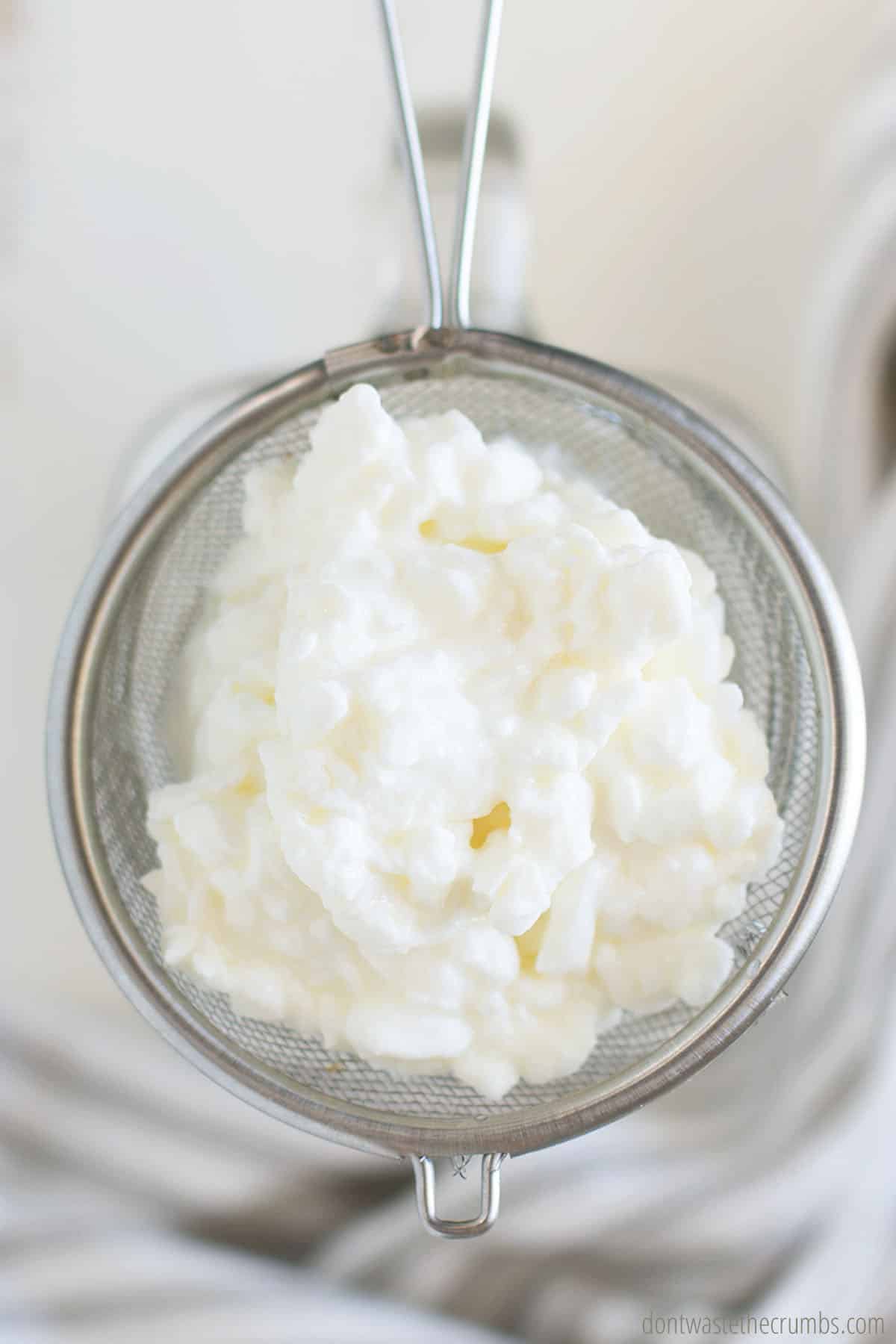
Uses for Whey
- Culture foods. Whey can be used to lacto-ferment all sorts of foods, including ketchup, mayonnaise, beets, cabbage (for sauerkraut), and carrots.
- Soak whole grains. Soak grains before grinding to boost their nutrition and make grains easier to digest. I first learned of this method in Nourishing Traditions, an amazing book on traditional cooking.
- Soak oats. Soaking oats overnight helps with digestion. Consider doing this before making Blueberry Baked Oatmeal or Perfect Overnight Steel Cut Oats.
- Soak beans. Your digestive system benefits from beans being soaked before cooking. Swap your acid medium and add whey, or feel free to add more!
- Soak nuts. For the same reasons above!
- Tenderize meat. Swap whey for any vinegar in a traditional meat marinade. Mind that whey will add tang, so adjust seasonings accordingly.
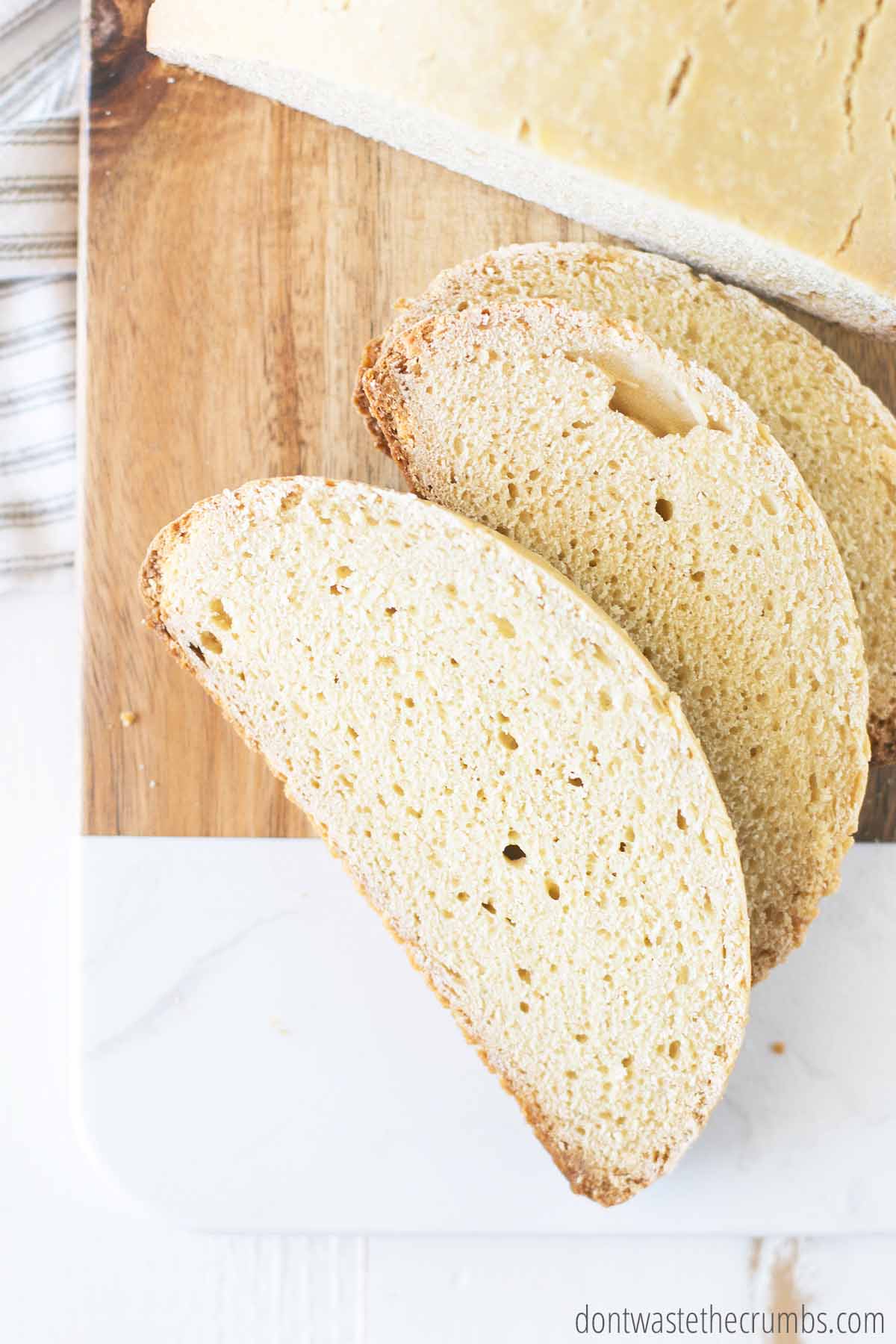
Easy Recipes with Whey as a Substitute
- Yeast Bread. If you’re not ready to make sourdough yet, uses for whey as the liquid in any fresh bread to get that classic sourdough flavor. I suggest starting with No-Knead Overnight Artisan Bread.
- Pizza Dough. Use in place of water in my favorite pizza dough recipe.
- Rice. Use whey instead of water when making rice. Although the heat will kill some of the live enzymes, you’ll still retain the nutrients since rice absorbs all the liquid.
- Pasta. Swap whey for water to cook pasta and like the rice, the pasta will absorb some nutrients from the whey.
- Pancakes. Use in place of some of the milk in Protein Pancakes or in recipes.
- Waffles. My Blender Oatmeal Waffles calls for water, but you can easily substitute any whey you have.
- Quick Bread. Think Pumpkin Bread or Chocolate Banana Bread and any other baking recipe.
- Sourdough Discard Recipes. Sourdough Pancakes and Sourdough Waffles both use milk, but using a little whey will give an extra bit of tang flavor.
- Buttermilk Substitute. Swap whey for buttermilk in Biscuits, Pancakes, Waffles, and even Cornbread.
- Milk Substitute. Uses for whey in recipes that call for milk to make sauces, like Homemade Macaroni and Cheese or Chicken Jalapeno Popper Casserole.
- Creamy Salad Dressings. Both Ranch Dressing and Caesar Dressing call for lemon juice, but you can substitute whey.
- Vinegar Salad Dressings. Swap all or part of the vinegar for whey in recipes like Italian Salad Dressing or Greek Salad Dressing.
- Marinades. These 4-ingredient Chicken Marinades all call for some sort of acid. Use whey for some of the acid for a fun twist on flavor.
More Uses for Whey in Everyday Cooking
- Smoothies. Use it as the liquid base in any smoothie recipe and naturally give it a boost in protein.
- Chicken Stock. Substitute for the apple cider vinegar and up to half of the water.
- Gravy. Use whey to thicken gravy instead of boring water.
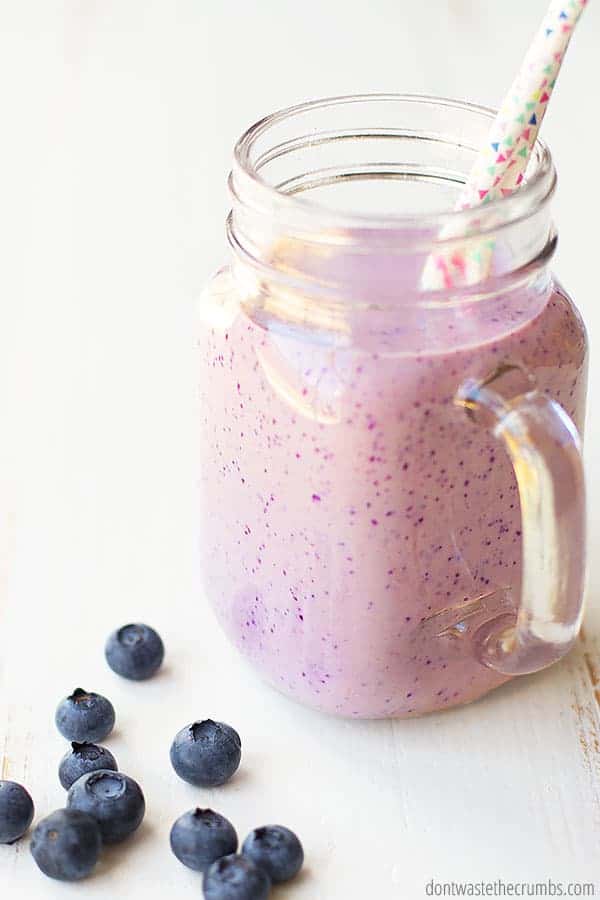
What is Whey Used for in Baking
- Substitute for orange juice. If you use orange juice in baking, try using whey for the same acidic properties.
- Substitute for lemon juice. Whey tastes much like lemon, so it makes a great substitution in recipes or cocktails.
- Make caramel. Add a bit of salt with a touch of sugar and voila – instant caramel!
- Lemon-Whey Pie. If you can use whey in place of lemon juice, why not try it for dessert?
Uses for Whey in Beverages
- Cocktails. Mix one part whey with one part juice, then sweeten to taste with honey or stevia.
- Lemonade. Here’s the recipe.
- Ginger Ale. Easy tutorial.
- Soda. The Swiss drink Rivella is 100% whey.
Uses for Whey in Fermenting and Cheese Making
- Stretching Mozzarella. You have to stretch the curds when making mozzarella, and using hot whey is a great alternative to using hot, salted water.
- Cheese brine. Feta and mozzarella will keep longer if they’re stored in whey.
- Cream Cheese. Similar to the method of culturing milk with buttermilk, you’re culturing milk with whey and straining for cheese. More details here.
- Ricotta Cheese. The word “ricotta” means cooked twice, which is what happens to the whey when you make ricotta cheese. Here’s a super easy tutorial to get started.
- Gjetost. A Norwegian cheese that’s sweet like caramel, with the texture of buttery fudge.
- Butter. I haven’t tried this myself, but I’m told if you let whey sit at room temperature overnight, the cream will rise to the top and it can be scooped away and used to make butter.
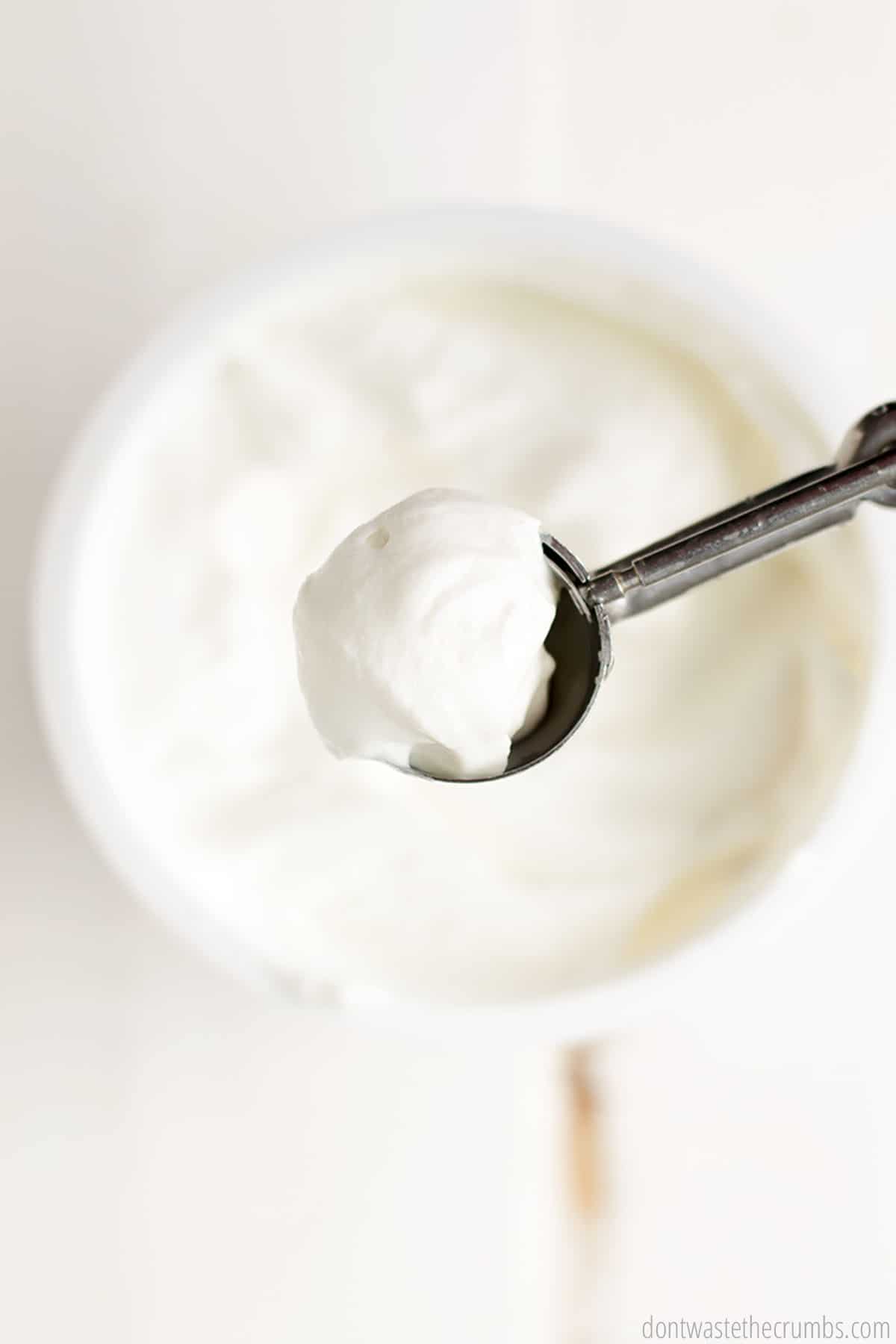
What to Do with Whey
- Condition your face. The cultures in whey are acidic, so toss some on a cotton ball and use it as a toner.
- Condition your body. And add one cup of whey to your bath for an all-over-the-body skin toner.
- Make a face mask. Uses for whey combined with soothing raw honey for an easy face mask. (Tutorial on this page.)
- Condition your hair. If you’re washing with baking soda, a diluted whey rinse will work just as well as this Homemade Conditioner.
- Pet food. Add excess whey to pet food.
- Chicken or pig food. Add to the water and/or milk when you feed the farm animals.
- Water the plants. Adding diluted sweet whey to your plants gives a boost of vitamins. Read this article to get started.
- Balance the garden’s pH. If watering the plants is out of the question, consider balancing the pH levels of peas, cucumbers, and squash by spraying some on just the leaves – the sweet whey will kill the mold that grows!
- Lower the garden’s pH. Blueberries, roses, and tomatoes like acidic soil, and whey will help you achieve just that.
- Pest Control. Use sweet whey with water to a 1:1 ratio and spray on garden plants to keep powdery mildew away.
- Add to compost. A great outdoors spot if you don’t feel comfortable adding it to your garden, or don’t have one to add it to!
- Freeze it for later. If you’re not making fresh cheeses, you may only get a little bit of whey at a time. Freeze it in an ice cube tray so when you have enough, you can use it in any of the above recipes!
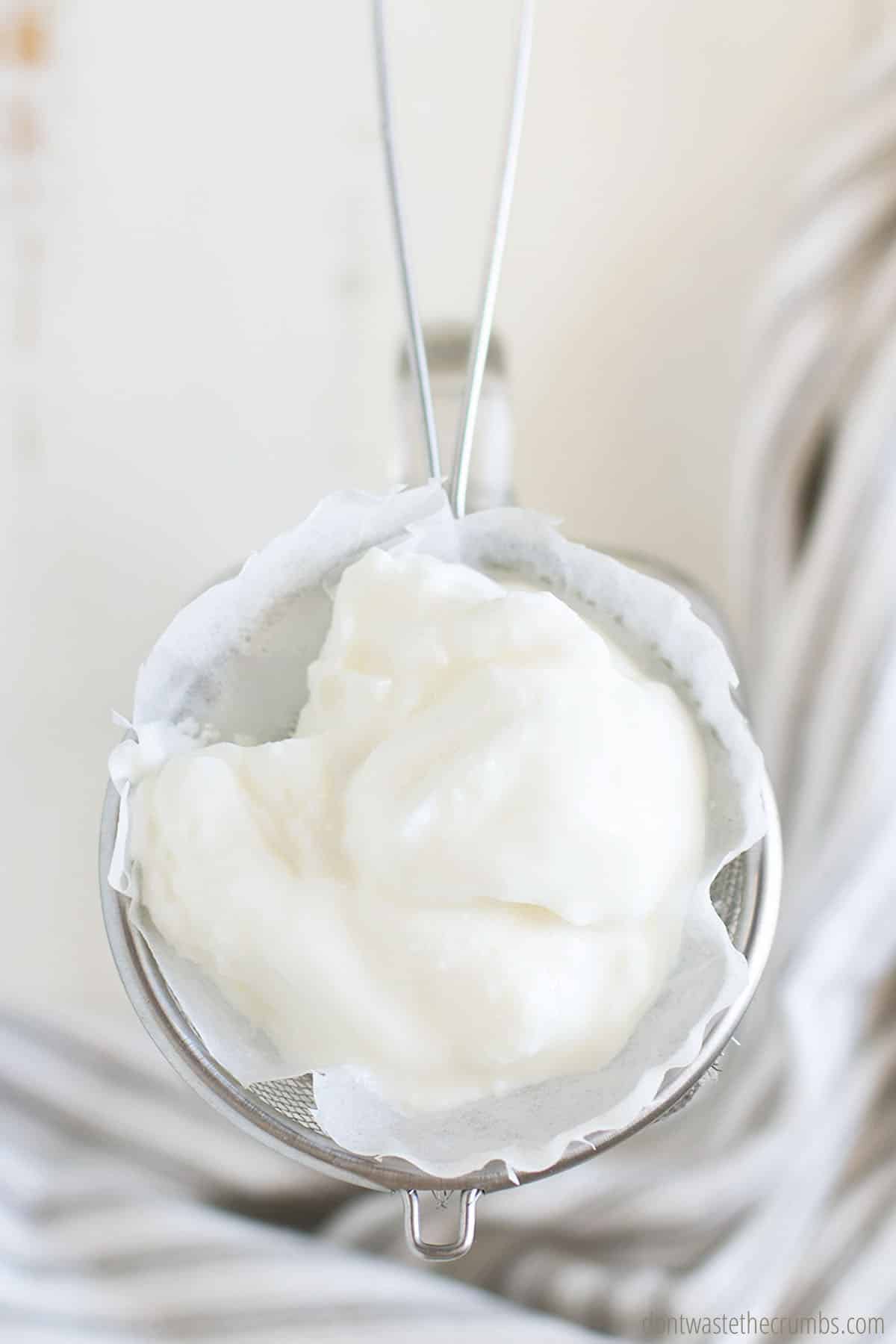
Whey Recipe (How to Make Whey)
You can easily find acid whey just by opening up your containers of dairy, but if you want to know how to make whey – whether for baking, cooking, or recipes – here are several ways to do it:
- Allow raw milk to sit at room temperature where the natural bacteria will cause the milk to clabber. Strain the milk using a cheesecloth, a tea towel, or an old (but clean) thin t-shirt.
- Use a fine mesh strainer, clean towel, or cheesecloth to strain Homemade Yogurt.
- Strain kefir (with the same methods as #2).
- Strain buttermilk (with the same methods as #2).
- Make Homemade Greek Yogurt (which is essentially the same as #2).
More Helpful Tutorials
- How to Blanch Greens
- 15 Easy Egg Substitutes
- How to Make Flour Without a Grain Mill
- How to Meal Plan and Make It Work


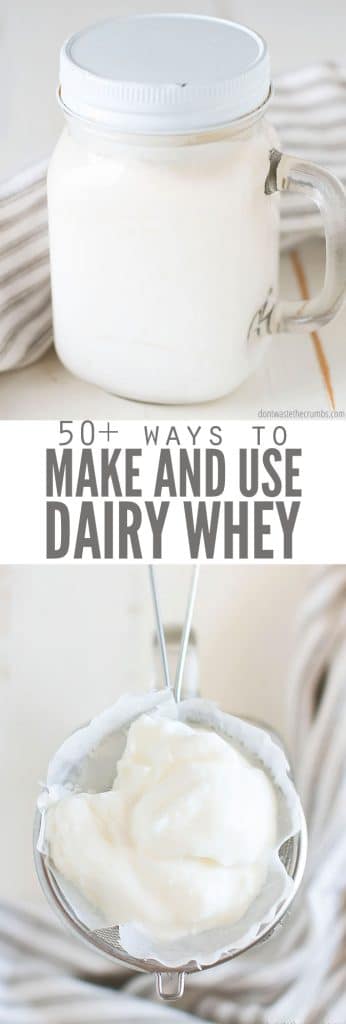

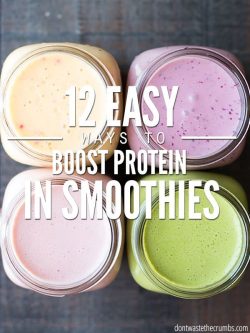



I made butter from heavy cream. Can I use the whey that is left over in all of the above recipes?
Do I strain it as well? Also, how do I store it?
Thanks in advance.
Hello Bernadette,
The leftover liquid from making butter is buttermilk. You can use it any recipe that calls for buttermilk! It should store well in a glass jar. What do you mean by ‘straining’? When you make butter from heavy cream you end up with butter and buttermilk. There’s nothing to strain. Can you clarify?
So the whey left from making Ricotta (heated to over 150F) is still viable for other cooking uses?
Fantastic article
Thanks
First I love the name of your website. I literally save the crumbs when I cut my homemade bread, to use in recipes. I also scrap the flour off the table where I have been working and resting my dough, to use in sauces and gravy. (Both I freeze until needed.)
All these ideas are wonderful, and most of them I will try. I get way to much whey built up from my yogurt making.
I would like to make a ‘fermented chilli pepper sauce’ recipe that calls for whey. I do not have whey but I do have kombucha. Do you think it would be a good starter for this recipe that I want to make? Thank you.
Hi Louise,
Kombucha tastes a little more zingy than whey, whereas whey has a deeper / sour flavor. I think it could work, depending on the recipe of course, and whether or not the kombucha may have fermented into vinegar. Then the chili pepper sauce would just taste more vinegary. But if you use kombucha that is not over-fermented, it might be an interesting endeavor. Let us know how it turns out. 🙂
Help?? I made yoghurt for the first time yesterday in hopes to strain it today to get the whey and use for my fermented foods that I make. However, the yoghurt is runny and the whey is more white than the offwhite whey I got when I bought the 8 dollar container of bulgarian yoghurt at the store. Ps, the whole milk I used was as “raw” as I could get around here. Lightly pasteurized. Can I still use this milky “whey” I got from my yoghurt in my ferments?? Thanks!!
Cynthia,
That should work fine. Did you try using it? How did it turn out?
you can use it just fine, but next time, you need to heat your milk to at least 180 degrees and then let it cool down. which is why ultra pasturized milk you don’t need to heat at all. it breaks down the proteins for even thicker yogurt. some white straining into your whey is normal though. just pour it into a pitcher and let it settle in the fridge.
So I set aside a half gallon of raw milk to naturally separate for the whey since its cucumber season and I want sweet pickles…. My milk is cleanly separated into 3 layers.
How do I strain that? the top is cream cheese right? the middle is crystal clear whey, and the bottom is “other milk solids”?? what do I do with that? how do i keep the whey clear and the cream cheese from the “other solids” in the bottom?
Hi Melly!
I am so sorry for the delay in response. I’d like to refer you to my friend Wardee at the Traditional Cooking School, because I don’t want to steer you wrong with the wrong answer. Here is a link to whey on her blog. https://traditionalcookingschool.com/food-preparation/askwardee-uses-for-whey/
She has a lot of information on her blog about whey and raw milk. Perhaps you can find an answer with her? I hope this helps. 🙂
I will like to try whey in making beignet if i will have a good tasting beignet.
it might give it a slightly sour flavor, which is why i like it in baked goods that are savory or already have sugar. but otherwise, it should be fine. it works in most of my quick breads and muffins. as well as my sour dough bread that asks for milk and i use whey instead.
Lisa, mixing it in good ratios with yogurt would probably be great. I have not personally tried it with salad and don’t know if that would turn out well.
There are so many amazing possibilities
I’m not at the point of making whey yet- is there whey that I can purchase and use the same way?
I don’t think I’ve ever seen whey in grocery stores, but if you buy yogurt, the liquid that accumulates at the top is whey!
Thank you for these suggestions. I made yogurt today for the first time. I am very excited to try using the whey in my biscuits.
Do you know how to ferment sweet whey?
The reason plain Greek yogurt (that has sugar of 6 or lower) is okay for those that are lactose intolerant is because it is strained and the majority of the lactose sugars are strained away in the whey. I learned it from extensive research when I became very lactose intolerant. Thinking about it, I’m not really sure why I even asked the question when it should have made sense to me. HaHa! But for anyone else who doesn’t know, I guess it’s there. Also, the reason longer fermented yogurt is easier to digest is because it has had longer for the bacteria to consume the lactose in the yogurt. Unfortunately for me, I don’t like really tart yogurt, and yogurt gets more tart the longer it cultivates.
I strain my yogurt because I am lactose intolerant, and straining out the whey gets rid of most of that lactose. So that means I probably can’t use the whey for consumong, right?
I’ve never heard that most of the lactose is found in the whey, so I can’t offer any suggestions there. Where did you hear this Tracy? Could it be that homemade yogurt is simply easier to digest than store-bought? Because I HAVE heard that before, especially when yogurt is fermented for longer than 12 hours.
1 gal fat free common milk in Instant Pot on yogurt setting, then strained thru white-handkerchief-lined colander overnight in fridge, yields 72 liquid oz of whey and 55 weight oz of Greek yogurt thick as cream cheese. I freeze whey in 64 oz plastic juice bottles, for later use as marinade instead of buttermilk for succulent juicy chicken, pork, fish.
I leave it in my yogurt and Kefir and consume it that way. Very healthy.
Love the site so helpful, I made Ricotta cheese and have loads of whey left, so now I know what to do with it. Thanks again.